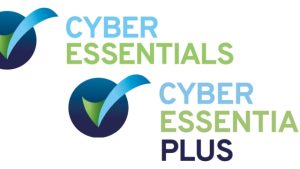
In today’s ever-evolving digital landscape, ensuring robust cybersecurity measures has become an absolute necessity. With the increasing prevalence of cyber threats and malicious attacks, organizations of all sizes are actively seeking effective solutions to safeguard their sensitive data and protect themselves against potential breaches. Amidst this pressing need, one solution has emerged as a powerful tool in the fight against cybercrime: Cyber Essentials.
Cyber Essentials, a government-backed scheme in the United Kingdom, is designed to help businesses guard against common cyber threats and become more resilient to potential attacks. By implementing a series of fundamental security controls, this certification provides organizations with a strong foundation for their cybersecurity practices. From small startups to large enterprises, Cyber Essentials offers a comprehensive framework that can be tailored to suit different sectors and industries.
Understanding Cyber Essentials
Cyber Essentials is a vital framework for organizations to safeguard against cyber threats. It provides a fundamental understanding of the key security controls needed to protect sensitive information and prevent unauthorized access. By implementing Cyber Essentials, companies can enhance their cybersecurity posture and reduce the risk of cyber attacks.
The primary goal of Cyber Essentials is to establish a strong foundation of security measures. These measures are designed to address common vulnerabilities that can be exploited by cybercriminals. By adopting these controls, businesses can significantly reduce the risk of a successful cyber attack, ensuring the safety of their systems and the data they handle.
One of the key benefits of Cyber Essentials is its simplicity. The framework is accessible to organizations of all sizes and technical capabilities. Its focus is on implementing basic, yet effective, security controls, without the need for complex and costly solutions. This allows even small businesses to enhance their cybersecurity posture and protect against a wide range of cyber threats.
By achieving Cyber Essentials certification, organizations can also demonstrate their commitment to cybersecurity best practices. This certification serves as a reassurance to clients, partners, and stakeholders that the business takes the protection of their data seriously. Additionally, many government contracts require Cyber Essentials certification as a prerequisite, making it an essential requirement for organizations looking to work with public sector bodies.
In the next section, we will explore the key security controls that form the foundation of Cyber Essentials. Understanding and implementing these controls is crucial for any organization aiming to protect their systems and data from the ever-evolving threat landscape.
The Benefits of Cyber Essentials
Cyber Essentials provides numerous advantages for organizations seeking to enhance their cybersecurity posture. By implementing Cyber Essentials, businesses can effectively fortify their digital boundaries, defend against common cyber threats, and safeguard their valuable assets. Here are three key benefits of embracing Cyber Essentials:
Enhanced Protection: Cyber Essentials acts as a shield that safeguards organizations from a wide range of cyber risks. With the implementation of this framework, businesses establish robust measures, such as secure configuration, to protect their IT systems and networks against evolving threats. This helps in reducing the likelihood of successful cyber attacks, preventing unauthorized access, and limiting potential damage.
Improved Business Reputation: Organizations that adopt Cyber Essentials demonstrate their commitment to cybersecurity best practices. By having the Cyber Essentials certification, businesses can enhance their reputation as trustworthy entities that prioritize the security of their clients’ data and maintain the confidentiality, integrity, and availability of their own systems. This increased credibility can lead to improved business opportunities and partnerships.
Legal and Regulatory Compliance: Many industries have specific legal and regulatory requirements regarding cybersecurity. Implementing Cyber Essentials ensures that organizations fulfill these obligations by adhering to recognized cybersecurity standards. By aligning with these regulations, businesses can avoid penalties, legal complications, and reputational damage that may arise from non-compliance.
https://cybercompliance.org.uk/pages/cyber-essentials
In conclusion, leveraging Cyber Essentials provides organizations with enhanced protection, improved reputation, and ensures legal and regulatory compliance. By embracing this framework, businesses can strengthen their cyber defenses, mitigate risks, and maintain a secure environment in the ever-evolving digital landscape.
Implementing Cyber Essentials
When it comes to implementing Cyber Essentials, there are several key steps that organizations should follow to enhance their cybersecurity defenses.
First and foremost, it is crucial to conduct a thorough assessment of your organization’s current cybersecurity practices. This involves identifying potential vulnerabilities and areas of weakness within your network and systems. By having a clear understanding of where your security gaps lie, you can prioritize the necessary actions to mitigate risks effectively.
Next, organizations should establish robust access controls and user privileges. Implementing strong password policies and two-factor authentication can significantly enhance the security of your systems. Additionally, regularly reviewing and updating user access privileges can help prevent unauthorized access and data breaches.
Another essential aspect of Cyber Essentials implementation is ensuring that all software and devices are up to date with the latest security patches. Regularly installing these updates is crucial as they often address newfound vulnerabilities and weaknesses. By keeping your software and devices updated, you reduce the risk of falling victim to known exploits.
Furthermore, organizations should implement secure configuration practices. This involves configuring network devices, software, and systems in a way that minimizes security risks. By adhering to industry best practices and configuring firewalls, routers, and other network components securely, you can significantly reduce the potential attack surface for cybercriminals.
In conclusion, implementing Cyber Essentials is vital for organizations looking to strengthen their cybersecurity defenses. By conducting thorough assessments, establishing robust access controls, keeping systems up to date, and implementing secure configurations, organizations can significantly reduce the risk of falling victim to cyber threats. Don’t underestimate the power of Cyber Essentials in safeguarding your digital assets and protecting against potential cyberattacks.
















